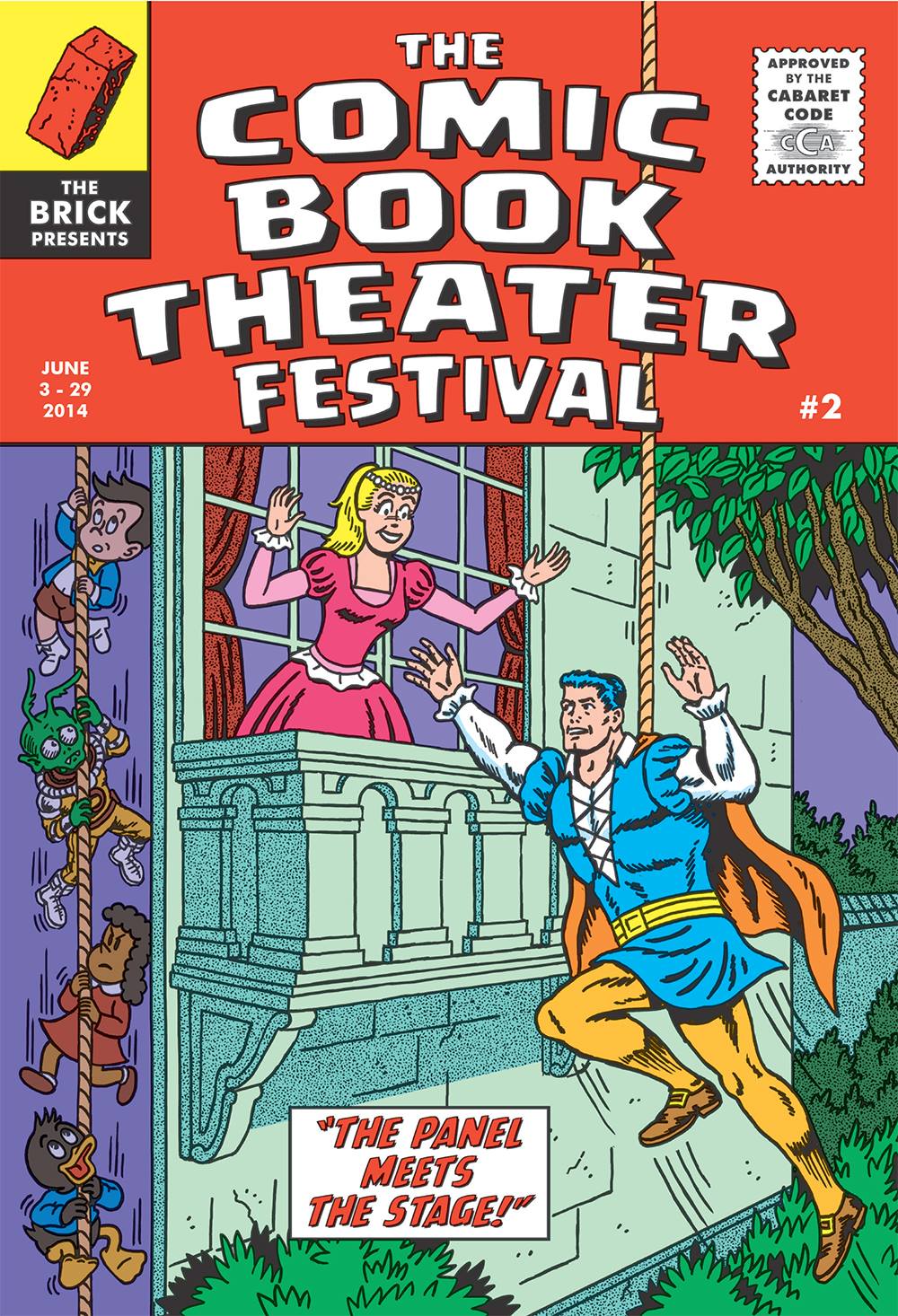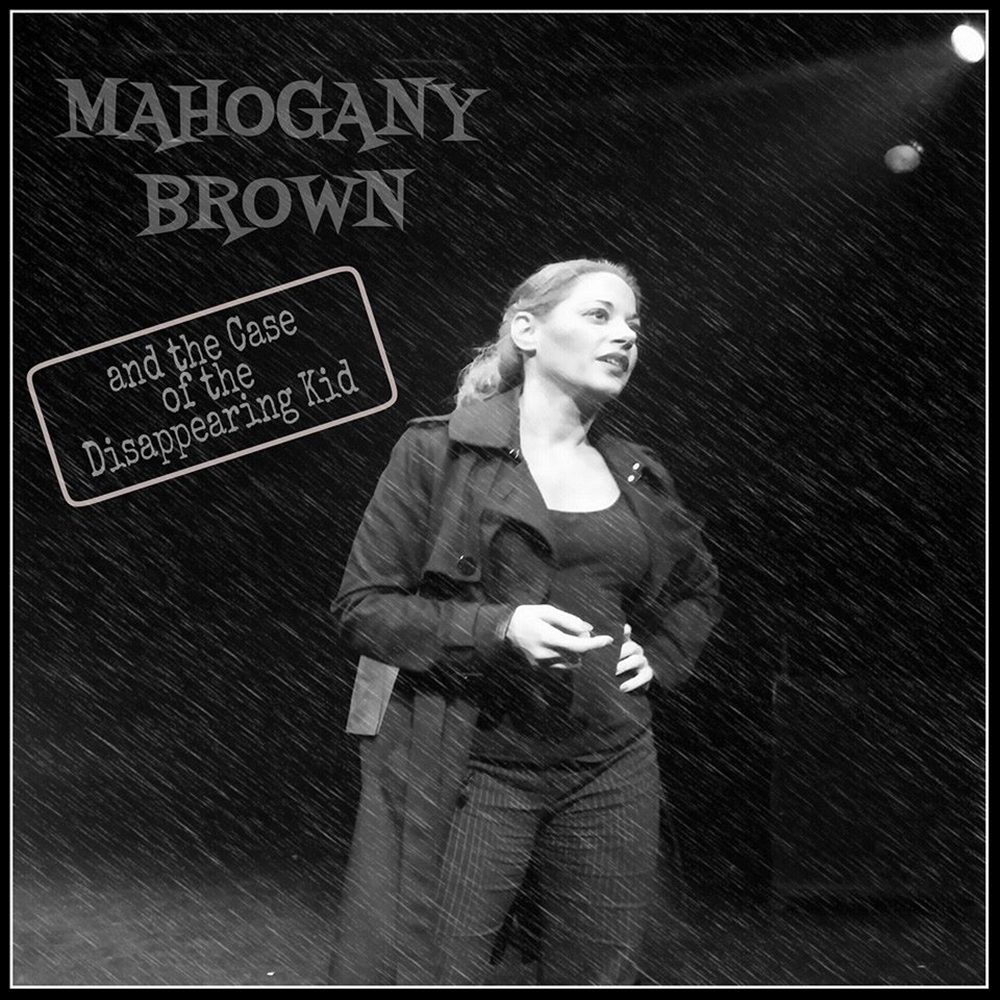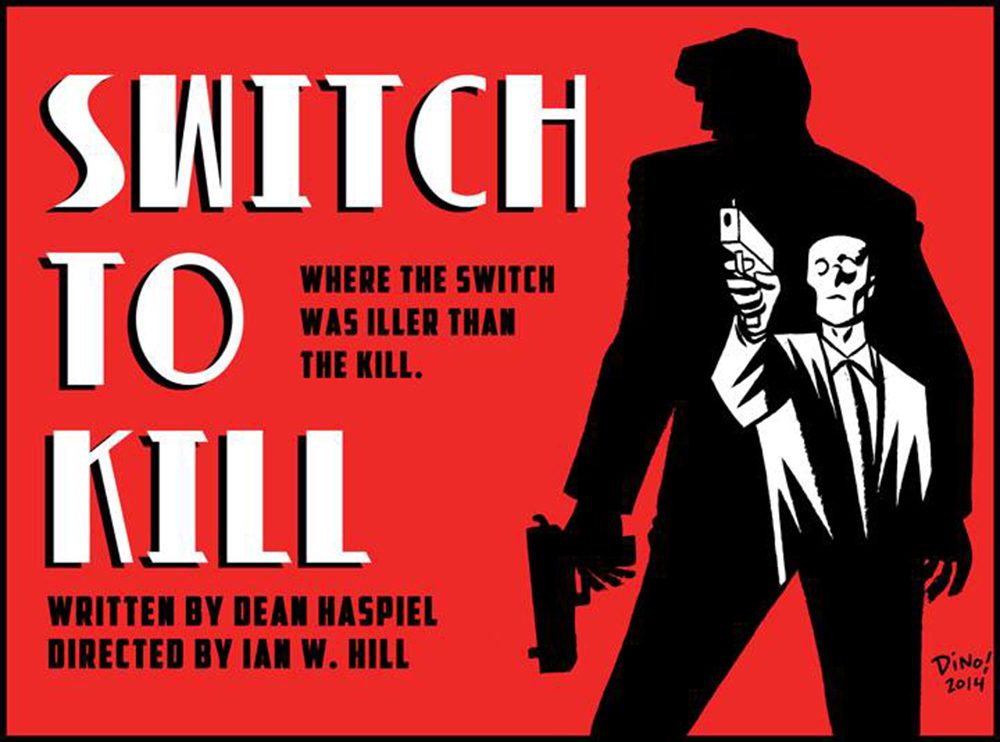 The Comic Book Theater Festival runs from June 3rd–29th at The Brick. Catch up on Part One of our coverage here.
The Comic Book Theater Festival runs from June 3rd–29th at The Brick. Catch up on Part One of our coverage here.
***
Part Two: Criminal Elements
In comics’s graphic universe, heroes are the distinct line against dangerous forces—but what really interests us most are the darker elements they define. Two shows at the Comic Book Theater Festival haunted these more shadowy parts of Metropolis.
The pivotal moment in Mahogany Brown and the Case of the Disappearing Kid comes midway, when one character, frustrated with a stakeout that’s going nowhere, is left alone onstage and, before stalking off himself, kicks over a cardboard shrub he’d been hiding behind—in this missing-persons mystery where the loss isn’t necessarily where you’re looking, he’s reached the limit of what hope, what fantasy, he can help to stay standing.
This is after he’s been trailing Mahogany Brown, a hardboiled P.I. who inhabits her film-noir persona more ferociously than her reluctant partner can manage. It’s 2014, we’re informed in the opening crime-drama voiceover, but Mahogany seems to be walking around in an envelope of 1944, albeit with strange stops and starts in her personality that seem like the slipping of a film from its sprockets.
 The man, who’s come to her with the dilemma of a son who’s gone missing in the swallowing dark of the city, is seen getting stories straight with the boy’s former schoolteacher, in what seems like foul-play scheming but is really a plot to keep going another kind of deception altogether—there’s a trauma at the center of this story that everyone’s actions revolve around, and playwright Gina Femia explores the lengths people go to in mercifully maintaining a delusion and trying to break news more easily than a 24-hour cycle allows.
The man, who’s come to her with the dilemma of a son who’s gone missing in the swallowing dark of the city, is seen getting stories straight with the boy’s former schoolteacher, in what seems like foul-play scheming but is really a plot to keep going another kind of deception altogether—there’s a trauma at the center of this story that everyone’s actions revolve around, and playwright Gina Femia explores the lengths people go to in mercifully maintaining a delusion and trying to break news more easily than a 24-hour cycle allows.
The device at the heart of this mystery will be readily guessable for anyone who remembers an obscure amateur detective character from 1970s comic books named Hodiah Twist, and not spoiled here for anyone who doesn’t, but the secret isn’t kept for long. It becomes plain enough as the story progresses—primarily in the interplay between Jacob Saxton (in a stoic, humane performance as the man, Jimmy Jones) and Melissa Roth (who offers astonishingly focused and moving characterization as Mahogany, the P.I.)—that the machinery of the storyline isn’t what matters; character, not plot, makes up what world we have, and the elusive quarry of all our bitter pursuits is a peaceful, unremarkable shared life.
(Mahogany Brown concludes its four-performance run on June 20; for details and ticket information on this and other shows click here.)
*
Wordplay comes to blows in Switch to Kill, hardboiled human interest auteur and ongoing pop comics legend Dean Haspiel’s first work for the stage. Characters Buck Dangerzone and Dallas Twilite are a codependent hit man team made in hell, but Haspiel and director/designer Ian W. Hill were made for each other—Haspiel’s Tarantino-esque marathon harangues and elliptical dialogues bleed into both the noir and the theater-of-the-absurd beats Hill has walked long and well.
 Stephen Heskett is hypnotically sour and fixated as the more talkative Buck, and he’s having a play-long quarrel with Dallas that’s much more than a mere workplace dispute. It builds to a Memento-level self-revelation, layered beneath these men who are so invested in remaining anonymous.
Stephen Heskett is hypnotically sour and fixated as the more talkative Buck, and he’s having a play-long quarrel with Dallas that’s much more than a mere workplace dispute. It builds to a Memento-level self-revelation, layered beneath these men who are so invested in remaining anonymous.
The line between self-assertion and concealment is smudgy for people whose job is to deal in life and death, and in one bar conversation Jimmy the Face (played by Hill himself, in a raspy deadpan straight from the urban desert of some never-filmed Orson Welles noir) holds forth on how an assassin’s “art” lives on after him—an odd reassurance that one will make one’s mark by erasing lives.
But ink stains the scene in every direction, in a shredded handbook of witty ripostes and bizarre characters from Haspiel’s sketchpad of eccentric tough guys (especially in a Nixonian pageant of discomfort and chagrin from Bryan Enk as a flustered fence, and a blur of verbal footwork from Paul J. Kim as a weird Ron Popeil-ish arms dealer).
You won’t see the end coming, but Haspiel and Hill will show you something beyond that—a light between ever more tunnels.
(Switch to Kill plays again on June 26 and 28; for details and ticket information on this and other shows click here.)
***
In Part Three next week: Power Plays
***
Festival poster art by R. Sikoryak.




